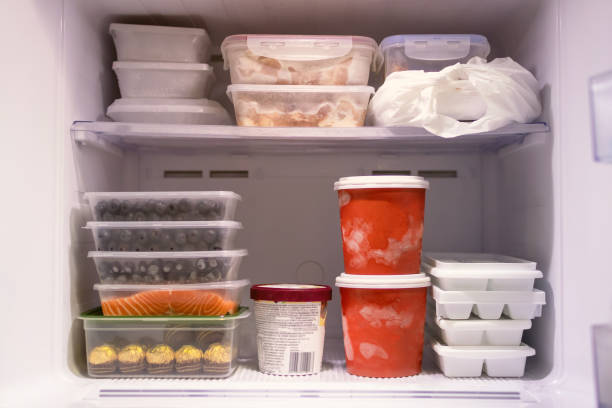
Staying clean and minimizing contamination of ice cream vessels is quite important if one has to sell quality and safe frozen products. Any refrigerator being used to store ice cream whether in the commercial business or in homes can quickly grow bacteria and other contaminants if not managed well. Let’s look at basic guidelines and measures that are crucial to prevent cross-contact between different foods in ice cream freezer compartments, so the products are still safe and tasty.
Temperature Control:
Properly maintaining temperature control in walk in fridges is crucial for preventing cross-contamination in ice cream freezer compartments, ensuring that frozen desserts remain safe and of high quality. It is very important to keep the freezer compartment at the right temperature in order to not only enhance the taste and look of the ice cream but also ensure that it is safe for human consumption. It means that one should poll thermometer to determine the temperature of the freezer from time to time, alter settings appropriately. It is also advisable to prevent sudden changes in temperature and this can be achieved by avoiding opening and closing the freezer door as often as possible.
Maintaining Cleanliness:
It is also important to clean the inner part of the freezer as frequently as you can using warm water mixed with a mild detergent. Always note areas such as corners, shelves, and door seals because they are prone to dirt and spoilt items. When washing utensils and other containers which have been used in handling ice creams, washing surfaces should be well rinse and dried before returning the utensils or containers back to the freezer since any watery droplets formed or introduced can lead to forming of freezers burns and ice crystals at the surface of the ice cream.
Handling and Hygiene:
Extra precaution is required during handling, especially in freezer compartments, and observing good hygiene is also crucial in avoiding the spread of bacteria in the ice cream. Avoid touching any item that was on the outside of the freezer with bare hands before opening the container; use hand gloves if necessary, and always wash your hands with soapy water before handling the containers of ice creams. No bare hand should be used on the ice cream and cleaning of spoon must be done between servings. In the commercial or shared areas, it’s recommended to have staff or their family members to wear gloves when handling ice creams in order to minimize chances of contamination even more.
Cleaning and Maintenance:
Indeed, it is important to ensure the separation of the freezer compartment from bacteria and other unwanted items and one way of doing so is by frequently cleaning it. Check for signs of wear or damage to the door, hinges, or internal equipment so that the poor freezer condition can be seen and must immediately contacted for repairs or replacement. Purchase products and services that meet the needs of the facility and perform every day, monthly, and yearly cleaning as a way of maintaining proper hygiene and cleanliness of equipment as advised by the manufacturers.
Organizing and Storage:
In addition to contamination issues, there are other factors to consider in storage and transportation of ice cream containers including cross contamination. Proper organizing and storage practices in your ice cream freezer compartment, whether in residential or commercial stainless steel fridge, play a crucial role in preventing cross-contamination and maintaining the quality of your frozen treats. Since bacterial contaminants are found on surfaces ad tapes of raw meats and seafood, these products should not be stored near ice creams. If it is possible, assign specific shelves or part of the freezer for certain food items in order to minimize the exposure of one food to another.
Therefore, it is crucial to eliminate cross-contamination when using ice cream freezer compartments to keep all foods safe to consume and offer quality frozen goods to the population. This means it is important to get correct cleaning techniques in place together with the storage and display techniques of the ice cream, managing temperature controls, use of correct handling measures and most importantly hygiene measures, coupled with proper cleaning and maintenance measures to enhance ice cream safety for consumption. It is important to maintain these aspects not only safe guards your valued customers or family members from health-related issues but also promotes better way of having ice cream.
